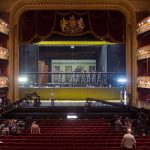 Augmented reality is undoubtedly in its infancy, but there are some interesting signs that it’s already evolved from being a mild curiosity towards offering tangible benefits in a number of areas.
Augmented reality is undoubtedly in its infancy, but there are some interesting signs that it’s already evolved from being a mild curiosity towards offering tangible benefits in a number of areas.
For instance, earlier this year Jaguar Land Rover teamed up with researchers at Cambridge University to develop augmented windscreens for our cars.
“We’re moving towards a fully immersive driver experience in cars, and we think holographic technology could be a big part of that, by providing important information, or even by encouraging good driver behaviour,” the researchers say.
Augmented training
Arguably the most interesting application however has been in training, and I’ve written previously about fascinating projects using AR in the training of everything from surgeons to pilots.
There have also been some great applications of AR in the education of children. For instance, UBC researchers have developed a video game to help teach young people about climate change.
The game, called Future Delta, provides players with a number of scenarios, ranging from a world where no attempts were made to mitigate climate change to one where we’re more proactive.
Players in the game are encouraged to play around with the options to try and create a safer, better environment in the future.
Putting you in the chorus
A similar project has recently been launched by the Royal Opera House (ROH) in London. I met with Tom Nelson, Creative Producer, Learning and Participation, at ROH ahead of their new season to virtually go behind the scenes of their latest production.
I was able to virtually stand shoulder to shoulder with performers as they went about their rehearsals backstage, providing the kind of exposure that me, and no doubt many others, have never had before.
“The future of VR for educational purposes is vast, and at the Royal Opera House we are just starting to discover the rich opportunities that the medium offers. The prospect of enabling audiences around the world to experience world-class opera and ballet, in a way never seen before, is an incredibly exciting prospect. VR allows us to transport users to the middle of a Royal Ballet Class, or stand on the Covent Garden Stage alongside globally renown opera singers, hopefully inspiring the next generation of performers, or empowering educators to explore the art forms within the learning environment. Of course, age limitations are currently in place for safety, but as we see the technology open up in a controlled and positive environment the possibilities are endless,” Nelson told me.
Suffice to say, the technology is very much in its infancy, but these early projects showcase the potential for augmented reality to provide a more immersive education than we’ve ever seen before.